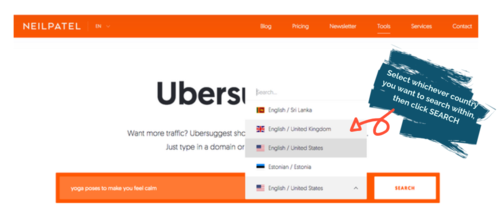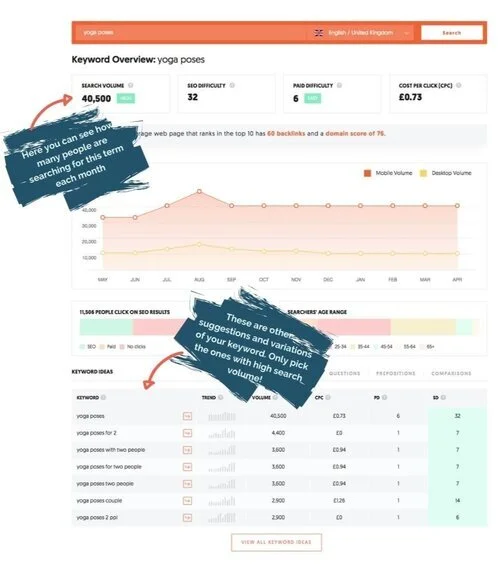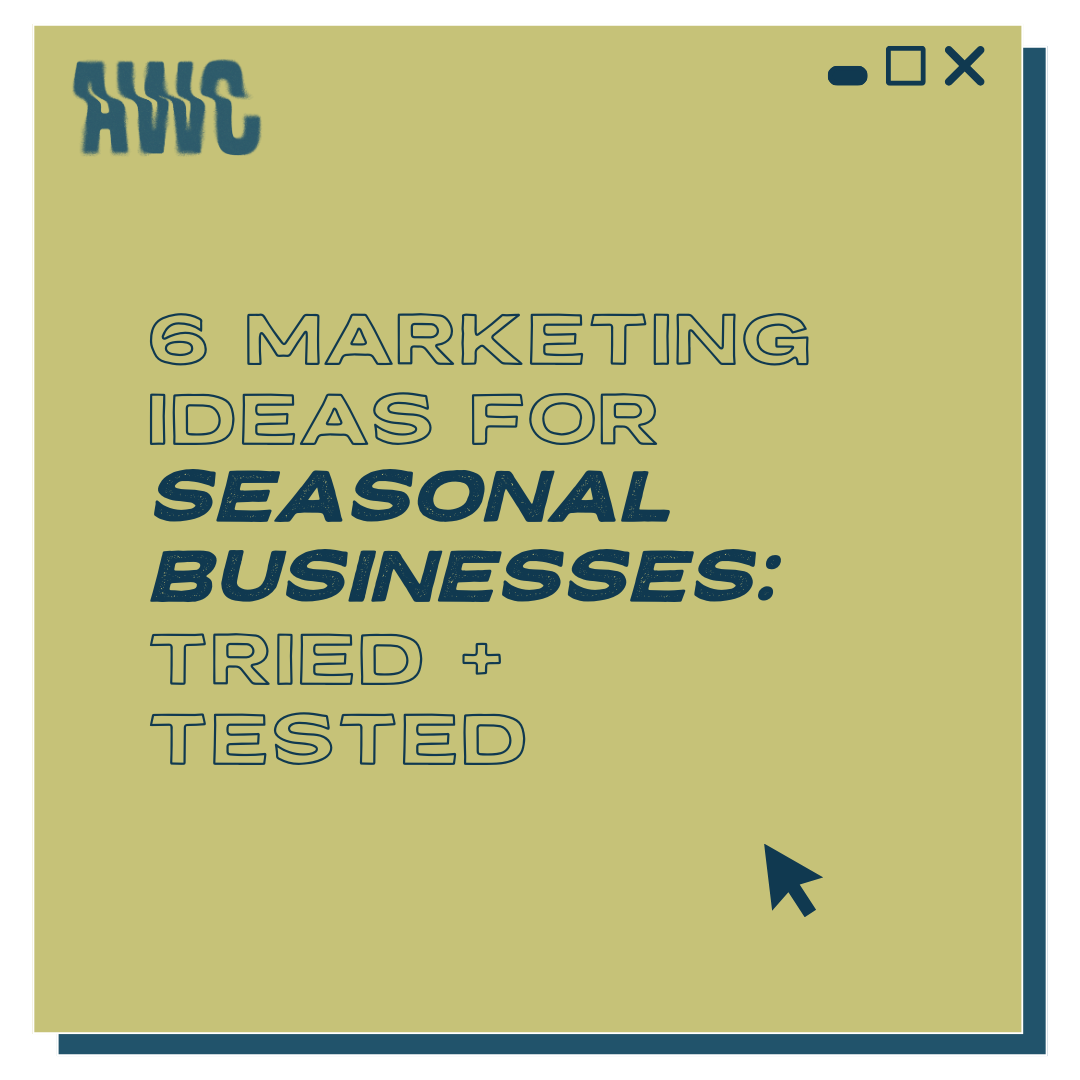The biggest mistakes when blogging for business
I’d like to introduce to you a client of mine, let’s call him Barry.
So I heard recently from Barry that he was told that regular blogging helps SEO.
He was told by the dude who re-designed his website that no matter the content or length of the post, it’ll help your visibility on search engines when people are looking for businesses similar to his online.
This made me scratch my head.
It is true that blogging (when done correctly) is one of the best and most effective ways of improving your rankings on search engines, but something smelt a bit fishy...
And another thing: The design team pulled all Barry’s old blogs from 8 years ago from his old website and plonked them straight onto the new website. Some of these blogs had less than 40 words in them.
The web designers also told Barry that it was important to keep these blog posts, as deleting them would look bad to the SEO gods.
I continued to scratch my head, my eyes widened, and my brow furrowed with confusion and astonishment. (**SPOILER ALERT** = this isn’t true.)
This info that Barry was given had come from a source that you would usually trust. Okay they’re not a company offering copywriting or SEO or content marketing services, but coming from a recognised company, you’d think they would know better.
Barry was misinformed.
Don’t be like Barry.
Blogs can be tedious, pointless, random, badly written, an intimidating chunk of text with no breaks or room for a breather.
How many of you have clicked onto a blog post and got bored within the first three lines and clicked the backwards arrow pretty much immediately?
We can all put our hands up for that one.
When there’s some intention behind the blog, thought has into why it has been written, the desired outcome for the reader has helped structure the post, the reader’s interests have been considered, the writer has a basic understanding of how to write a sentence, they can be engaging, exciting, motivating and inspire action. Blogging for business can be an art.
Think back to the last blog post you read (or at least skim-read) to the end. What kept you going to the end?...
Now hold that thought...
There are a couple of reasons that stand out as to WHY you should blog.
#1 → to improve VISIBILITY online and your chances of getting to the top search engine results pages, particularly if you’ve got strong competition in your industry
#2 → to strengthen brand loyalty, gaining the TRUST in your audience, showing yourself as someone they can relate to, learn from, be inspired by and rely on
#3 → to BUILD email lists / boost bookings / promote affiliate partners / prime people to buy from you / prep people to anticipate your up-and-coming launch
Barry knew about point #1 and kinda knew #3. The second pointer was news to him.
So I’ve started to see that it is the HOW that is the thing that stumps people most.
Here are the main factors that should be taken into consideration when you’re next thinking about blogging for business purposes, so you’ll have the biggest impact on your audience
AND the ever-illusive algorithm that Google uses to choose who gets to go on the first page of its search engine results pages.
200 words isn’t enough.
There’s a reason why the average page hitting the number #1 spot on Google (for ANY search term) is more than 2000 words long.
The table below shows Hubspot’s research on webpage content compared to the amount of attention it go on the internet. Short content wasn’t half as effective in terms of getting potential clients to sit up and notice.
First off, it’s not going to take your reader more than a minute or two to read 500 words (or even more than 30 seconds if they’re skim reading).
Generally, if someone doesn’t spend very long on a webpage or clicks backwards almost immediately, it’s telling Google (*disclaimer* other search engines are available*) that the content wasn’t very interesting or useful.
Let’s imagine one of Barry’s ideal clients typed “how are waves affected by the weather?” into the Google search bar. Now, the answer isn’t straight forward.
There are local weather systems to consider, as well as the conditions right out in the middle of the ocean that create swells in the first place.
To fully answer the question, Barry would need to talk about onshore and offshore winds, swell period, fetch, high and low pressure systems, blah blah blah.
Anyway, there is no way Barry can give a satisfactory answer in 500 words. If the reader clicked on Barry’s blog post to answer this question, they will soon realise this blog post isn’t detailed enough and click the backwards button.
Google’s main goal is to provide the people that use it with the most useful info. They will prioritise web content and blog posts that are going to solve the user’s problems in the most effective way.
The quicker someone clicks backwards off Barry’s very short blog posts, it is showing Google that the post is not satisfying the query of the person who typed the question into Google in the first place.
Google now registers Barry’s blog as not containing valuable content for the reader, sadly devaluing his website in the process.
That means Barry has lost ‘points’ against his competitors online, so he is more likely to show lower down on search engine results pages.
The lower down the page Barry’s business is, the less likely people are going to click on his website.
The fewer people that click on Barry’s website, the less people are going to buy from him.
Sad times.
Keyword research doesn’t need to be pricey.
To start with, we need to understand what keywords are:
They are the words and phrases that people type into the search bar on Google.
Keyword research tools can rack up in your business expenses, but I always find I’ve got sufficient research done without once having put my card details in anywhere.
In this scenario, let’s imagine Barry is running a yoga retreat, and he has written a post about the mental health benefits of practicing yoga regularly.
So Barry has decided he wants to show up on results pages for the terms “yoga for mental health”, “what is mindfulness?” and “best yoga poses to make you feel calm”.
Barry then will need to pepper these specific terms throughout his blog post to show Google [or *insert alternative search engine here*] that is what his content is about.
Barry can put these keywords in headings, titles, meta descriptions (also sometimes called the ‘page summary’), alt text (which is the description of an image you use to tell Google what’s in the image), the web address that the blog post can be found at (also known as the ‘URL slug’), and within the body of the text itself.
But it’s no use Barry picking these keywords or phrases out of thin air. How can he find out which ones are going to make the most impact?
There are a couple of ways you can do this. Start typing your chosen keyword or phrase into Google. The search bar will auto-populate with the most commonly searched keywords, phrases or questions. So say Barry starts typing in “yoga for…”. The first auto-populated suggestion is “yoga for swimmers”, but the second is “yoga for mental health”. This tells Barry he is on the right track.
You could type in a shortened version of your preferred keyword into Google.
At the bottom of the results page, you’ll see other suggestions of similar searches that are the most popular to date.
This time, Barry searches “mindfulness and yoga”. He scrolls to the bottom of the first results page, and the fourth related search is “what is mindfulness?”.
Bingo.
My favourite method is using an epic website called Ubersuggest.
It’s my number #1 go-to when I’m blogging for my own business (including the one you’re reading right now).
This website gives you a ton of info on what is regularly being searched for, other related search terms that have more people using them, and even what terms your competitor is ranking for.
This time, Barry types in the search term “yoga poses to make you feel calm” into the Ubersuggest search bar.
It turns out that the number of people that have recently searched for that exact term is negligible.
He clicks on the other suggestions and sees that “stretches to make you feel calm” and “yoga poses to improve resilience” have a much higher search volume.
These terms with a higher search volume are going to help Barry’s blog post be more visible online.
As long as his content is interesting, and his keywords fit into his blog post naturally, this is helping him get more ‘brownie points’ on the SEO leaderboard.
Old content doesn’t need to go in the bin.
Recycling and redistributing old content can have a similar effect on your search engine ranking as brand new blog posts. And it is definitely a lot easier than writing an entirely original blog post from scratch.
Google continually trawls the internet, both old and new content. New content is going to do better than the old, as you are (or will be once you’ve finished reading this blog post) showing Google that you are ensuring your readers are getting the most up-to-date info, and that you’re on top of current trends and queries.
*Top tip* changing publish dates will be a big flashy signal to Google that it’s new content you’re posting. If you’ve got dates in your blog post title, consider removing them.
Be careful if you’ve got other people linking to your blog post if you’re changing the URL slug (i.e. the bits that come after your domain name in the website address bar) as this might leave a dead end to someone using an old link.
So the best way to get around this is to create a 301 redirect to the new and shiny, updated blog post.
People are selfish.
In general, people are only going to spend their time and effort reading what you’ve got to say if you can promise them something in return.
Providing the reader with value (whether it’s tips they can take away to do something themselves, a relatable story that inspires change or action, something educational that can help people in their lives and/or save them time) is going to mean they are more likely to last the entire blog post, rather than clicking away too soon.
So if Barry ran a rock climbing centre, it could be a review of the most amazing climbing shoes he’s just bought with a discount code to get your own pair at the bottom, or a terrifying story that one of his staff members just told him of their climbing trip to Yosemite where they overcame the unthinkable and showed incredible adversity.
If Barry ran an eco-clothing brand, he could give the top 5 tips to reuse, reduce or recycle household objects, or a blog post about an event he is running to increase awareness of environmental issues whilst involving other local businesses to help along the way.
But how do you know if you’re going bait readers?
Think of your perfect customer. Someone who would absolutely love what you offer and want to invest both their time, money and energy in you and your brand.
This is the first step towards creating your brand messaging guidelines. The most important thing to remember is that you need to -first and foremost- consider and write for your ideal client.
By knowing your ideal client, you can then start to think about what they would find valuable + what they will respond to.
Nurture them and show you care about them: If you are giving your ideal client value, they might not be ready to buy from you right now, but they will start to trust you, rely on your expertise, come back again and again to read what you’ve got to say.
They start to know what you’re about, they enjoy your personality quirks, how you got to be where you are today, and enjoy your relaxed/humorous/silly/approachable tone when posting online. T
hey take note when they see you’ve posted something new, and will start recommending you to their mates and colleagues too.
If I’ve lost you with all this talk of brand messaging, have a little read of my blog post explaining what it is and how it can help you create an excited, loyal following of super-fans who are dying to turn themselves into paying customers.
You can do better than Barry.
(But don’t worry, Barry’s gotten over the shock of it now. Barry and I had a little chat, and we’re currently debunking all these misconceptions about his blog as we speak and are updating his posts to be thought-provoking, funny, nostalgic, motivating and informative).
So the main things you need to remember when blogging for your business are:
Create lengthy, comprehensive, in-depth content that is engaging and makes people want to carry on reading;
Use strategic keywords to ensure you are going to be more visible on search engine results pages and to be certain you’re picking subjects that are commonly sought after;
Recycle old blog posts to keep your content relevant and save yourself time;
Create content that will most likely attract the people you can most easily convert into customers, using brand messaging.
If you want to dive further into the world of content marketing …









Learn how these 5 brands created touchpoints that subtly *but memorably* conveyed their values, boosted brand personality + customer affinity [inc. take-away tips to become more memorable]